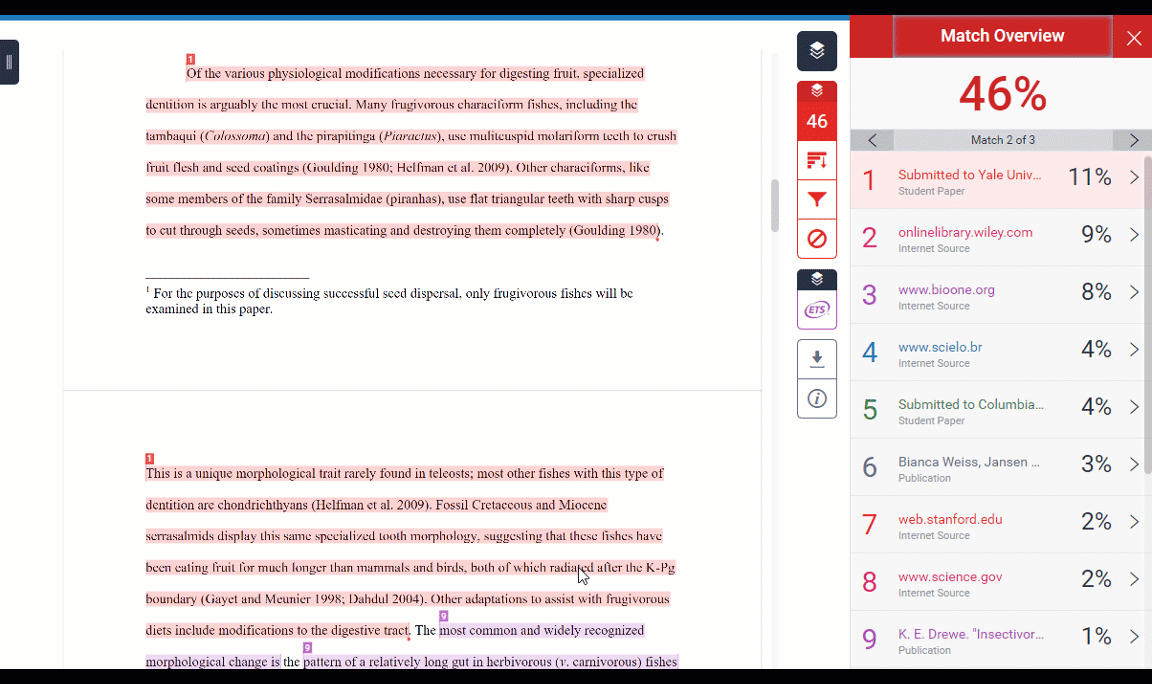Turnitin flags similarly-worded passages in student papers submitted in the same course. Because Turnitin labels all matches to other Yale papers as “Submitted to Yale University,” you’ll need to determine whether the paper that matches with your student’s was submitted in your class or another class at Yale. To do this:
- Click on the number above the highlighted text. (You can also click the source in the right sidebar.)
- In the pop-up window, click the “full source view” icon to display the source side-by-side with the student paper.
- Scroll to the top of the source paper to look for the author’s name, the course it was submitted to, and the submission date.
- Scroll to the top of your student’s paper and compare the name, course, and submission date with those of the source text.
In the example below, the papers were written by different students (Timothy Dwight and Ezra Stiles) in the same course (FISH 202), which suggests collaboration.

Figuring out your course of action will require you to determine: (a) whether the students collaborated, and (b) whether such collaboration is allowed.
(a) When Turnitin flags passages among papers in the same course, it sometimes indicates not that the students copied from one another, but that they are working from the same source text. The similarity in their wording may indicate that each student has failed to paraphrase that source effectively, but it isn’t necessarily evidence that they copied work from one another.
(b) If you do determine that the students collaborated, you’ll need to consider whether this collaboration is a violation of your course policies. The Yale College Undergraduate Regulations leave policies on collaboration up to the instructor. And while most instructors expect students to do their own work, assignments that allow—or even require—students to write together aren’t uncommon.
How to Respond to Each Student
How you respond when similar passages appear in your students’ papers will be determined by your course policies on collaboration. In a case where such collaboration violates the policies of your course, you might tell each student: “Passages in your paper are highly similar to passages in the paper of Student X. Copying from a peer is a violation of the policy of this course, in which all students are expected to do their own work.”
What You Can Do in Class
Put your collaboration policy in writing on both your syllabus and your writing assignments. Discuss it in class as well. Your policy should specify both when in the writing process students are allowed to collaborate and what kinds of collaboration are allowed. Are students, for example, limited to discussing their essay ideas with one another, or are they allowed to exchange written drafts of their work? For students working on group projects, you’ll want to make clear whether students may share language with one another or whether each must submit a paper written entirely in their own words.
